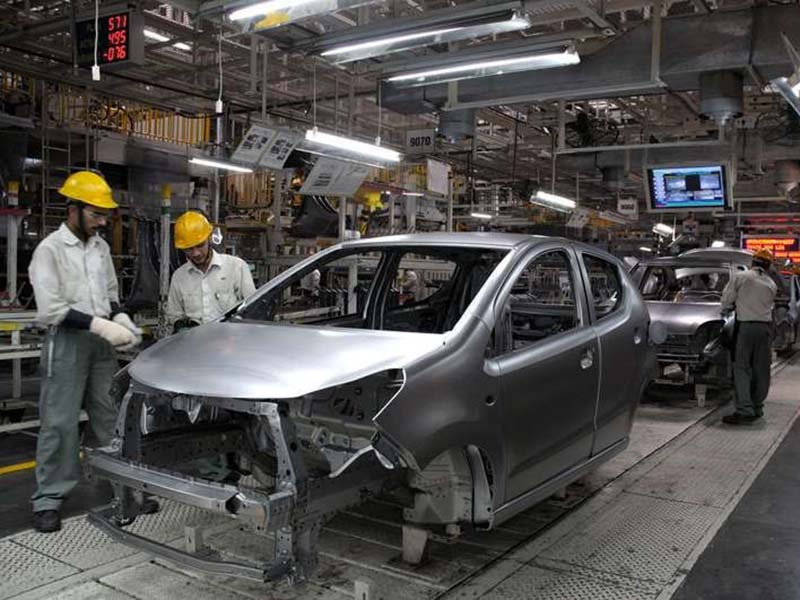By AlignIndia Editors
When India wrested independence in 1947, it inherited a very difficult economic situation. Colonialism had destroyed the economic and societal fabric and isolated the sub-continent from modern industrial developments taking place across the world. The structural damage to economy and society inflicted by the colonial rulers, along with acute poverty and illiteracy, ruined both agriculture and industry.
After independence, the process of rebuilding India started. Pandit Jawaharlal Nehru was the pioneer who laid the seeds of compassionate capitalism. His brand of socialism protected the domestic Indian market from external competition, while bestowing Indian industrialists with a captive market. This, over time, also helped in the gradual movement of human resources from agriculture to industries in various sectors.
The Nehru era saw development of several financial institutions (like IFCI in 1948, ICICI in 1955, etc.) that helped channel capital to Indian industry. The public sector helped create the massive infrastructure, fundamental industry and sophisticated technology-intensive capital goods that the nation’s private sector was not yet capable of constructing on its own, then. For e.g., the public sector HMT built lathes from steel produced by public sector steel plants in the 1950s, and provided them to Indian capitalists to produce the consumer goods the public purchased.
In the process of erecting the infrastructure and producing vital capital goods, the INC government helped create an organized industrial workforce with sustainable purchasing power and an enduring aspiration to educate their children well. This cyclical process created both fledgling demand for industry’s produce and a skilled or educated workforce, creating a path dependency wherein the famed IITs and the IIMs could boost the nation’s current capability in information technologies and successful businesses in general.
Senior leaders of the Congress Party firmly believed that industrialization must be started and be closely associated with agriculture as it developed. They also believed that industrial development was mandatory for rural development. It would ease the dependence of population on land and also increase employment opportunities in rural areas. Large capital based industries and machine-manufacturing sector were considered the core areas. Their absence was considered an indicator of economic dependency and backwardness. The leaders of the Congress party also advocated strengthening of medium, small and micro enterprises (MSMEs). The enterprises of this sector were offered incentives and safety so that employment opportunities might increase. Employment generation was a part of an overall development-strategy.
During the decades of 1930s and 1940s, the national movement of the Congress party accepted reinvigorating and making structural changes in agriculture. The movement’s vision for economic restructuring was based on a pro-active and central role of the state. The state, in the articulated vision of the party in the 1930s, was entrusted with economic planning and development. The government had to develop infrastructure including roads, power, irrigation and water-supply. For this, the government had to mobilize its own resources since Indian capitalists were unable to invest on such a large scale.
Under the leadership of top leaders of the Congress party, a small but independent industrial base owned by Indian capitalists came into existence between 1914 and 1947. A group of Indian industrialists were successfully making their presence felt across the country. They could be very helpful for planned development. The All India Congress Committee (AICC) formed an Economic Programme Committee in 1947 under the leadership of Pandit Nehru. It recommended the priority for defence, public services and core-sector industries. Against this backdrop, the National Planning Commission was formed on 15th March 1950. In the decades to come, it chalked out and presented massive and detailed planning for development even as its sub-committees prepared a report for development in 29 sections.
The First Plan (1951-56) was mainly dedicated to accomplish unfinished tasks. Efforts were also made to combat the crisis of the post-war situations. The famous Nehru-Mahalanobis strategy for development was implemented in the Second Plan (1956-61) which continued further in the Third Plan (1961-66) also. A hallmark of this strategy was to develop industries of the core sector as public undertakings. Three steel industries, all public sector undertakings, were founded during the Second Plan.
For self-reliance this industry’s development was essential. It had to reduce our dependency on imports and for that matter on foreign countries. Pandit Nehru’s vision was that in the prevailing circumstances exports should not be increased in the same proportion of imported machinery and basic finished products.
The most important and simultaneously complex tasks in the initial decades post-independence were
- Planned development by the state
- Division of responsibility between public and private sectors
- Protection to small industries
- Maintaining regional balance
- Resource mobilization and usage according to aims and priorities.
To accomplish all of this, the country needed a complex and exhaustive system of controls. Industrial licensing was equally important. These needs were fulfilled by the introduction of the Industrial Development and Regulation Act (IDRA) of 1951.
The Nehru-led Congress government’s adoption of these policies resulted in impressive achievements on many fronts over the duration of the first three Five-Year plans, up to the mid-1960s. The Indian economy grew several-fold compared to the growth during the preceding colonial period. National Income or Gross National Product of India increased at an annual rate of 4%, four times the growth witnessed during the previous 50 years of British rule.
The growth rate India achieved after independence was more or less the same as that achieved by now developed countries in their initial phase of industrialization. In the words of renowned economist Prof. K.N. Raj, “It is often comprehended that during the latter half of 19th century and the first quarter of 20th century, Japan developed rapidly. But during the period of 1893-1912, the growth rate of its national income was little less than 3 % and in the next decade it didn’t go beyond 4%. Keeping these parameters in mind, India’s growth rate for the last 15 years (1950-65) is very satisfying.”
Cutting to the present, India’s manufacturing sector, despite its deep potential, has underperformed, with the share of manufacturing in the nation’s GDP stagnant at about 16-17 per cent, despite the much hyped ‘Make in India’ announcement in September 2014. In the current age, Indian manufacturers should be looking at tools like AI and 3D printing, which requires technology partnerships and product development across multiple verticals. It may be useful to think about a sustainable localization (or local content in products and services consumed) strategy that blends a comprehensive national local content blueprint with a strategic governance framework that continuously scans key sectors and uncover localization opportunities. Of course, clear procurement guidelines are a key part of them; but a unified platform to connect internal supply and demand is also vital as it can help transfer market knowledge and production expertise simultaneously. It can also help in the up-skilling of the national workforce. Better identification of current regulatory barriers could also then be possible, thereby helping in facilitating an improved localization future.
Also, as Covid-19 further accelerates digitization trends, it is to be anticipated that technology will become an even more influential lever to boost productivity and shareholder prosperity. There is nothing inherently wrong about this situation. However, it is vital to consider worker segments who could get particularly marginalized by such trends, as this can exacerbate wealth inequality exponentially and hollow out vibrant sections of the middle-class.
Vulnerable worker cohorts need to be bolstered as the tide of technological innovation rises. This is easier said than done. However, one option could be to improve collection and processing of labor market data more systematically to increase chances of creating viable-pay jobs across Indian states. In other words, the labor data system has to help drive better precision in identifying supply and demand vectors on a nationwide basis. This can help the nation’s informal workforce (including the self-employed and casual labour) also, by enabling an upward spiraling arc of structured training and skilling opportunities throughout life. After all, the hope of a better tomorrow is the essence and elixir of life.
(AlignIndia helps you dismantle propaganda piece-by-piece, so that Indian Democracy stays alive. The deafening din of bigotry and jingoism has made us forget Gandhi, Nehru, Patel, Shastri and scores of other leaders who built India based on the values of peace and ethics, standing up for the downtrodden and the voiceless. Our effort is aimed at reviving these core values as enshrined in the Constitution of India while fiercely protecting the diversity, which defines the idea of India.)


